Cross stitch, Needlecraft and Embroidery Glossary: Eastern stitch to Eyelets
A comprehensive illustrated needlecraft dictionary with clear definitions and working diagrams. Includes 766 terms used in cross stitch, embroidery, tapestry, blackwork, and goldwork. (Click thumbnails to enlarge.)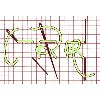
Working from left to right, work horizontal stitch across four threads, insert needle and bring it out diagonally back four threads below staring point. Form vertical stitch be inserting needle again at starting point and bring needle out four threads to the right and four threads down. Then take needle under vertical stitch, over, around and under horizontal stitch, over loop formed without entering fabric and then insert needle through the same hole as it was brought out and out four threads above to begin next stitch.
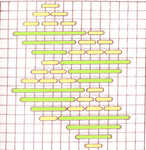
The `basket' is formed by 4 horizontal stitches over 8,6,4,2 threads and there are 6 'eggs' to each basket , each worked over two threads of fabric. This looks best worked in two contrasting colours and is more easily worked with two needles. It can be scaled down to a smaller basket of 6,4 and 2 threads with three eggs in it.
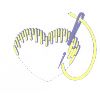
The first row of stitches are alternately long and short stitches and the following rows are stitches of an even length until the last row of the area where stitch length is varied to finish the filling. 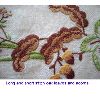
This can be used with fine shading colours. A version called surface long and short stitch is more economical with floss. Other names for this stitch are long and short stitch, shading stitch, tapestry shading stitch, plumage stitch, feather work and opus plumarium.
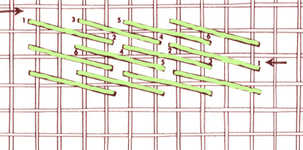
This is the interlocking or encroaching Gobelin turned on its side and makes a good background stitch. Work the first row from left to right and top to bottom following the numbering, the second row from right to left and bottom to top as shown. See also oblique stitch
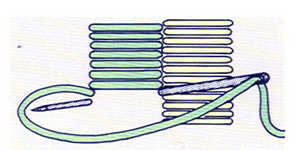
The second set of stitches is worked between the rows of the first to blend smoothly.

This is worked in blocks in either horizontal or vertical rows. Work five vertical straight stitches an then oversew each of the four corners with two diagonal straight stitches of different lengths as shown, The size of the blocks can be varied but must always be over an even number of threads.
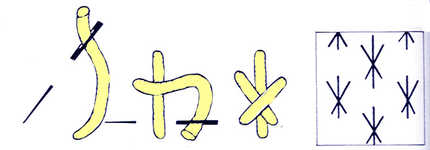
This is worked regularly and consists of a long vertical straight stitch crossed with an elongated cross stitch which is placed slightly above the base of the vertical stitch.
The thread counts range from 5 to 15 per cm, 12 to 38 per inch and a stitch is normally worked over two threads but very fine work can be executed over one thread.
14 count is 5.4 threads per cm
18 count is 6.85 threads per cm
19 count is 7.5 threads per cm
20 count is 8 threads per cm
21 count is 8.5 threads per cm
22 count is 8.7 threads per cm
23 count is 9 threads per cm
25 count is 10 threads per cm
27 count is 10.7 threads per cm
28 count is 11.2 threads per cm
32 count is 12.6 threads per cm
35 count is 14 threads per cm
40 count is 16 threads per cm
55 count is 22 threads per cm
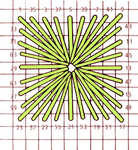
This forms a square shape with all the stitches going through the central hole. By working the stitches in the order numbered in the diagram, (the even numbers are where the thread is stitched through the centre), thus making two trips round the centre, the final appearance is much neater than if every stitch is worked as you go round.
The stitch can easily be made larger or smaller over almost any even number of thread. See algerian eye or star eyelet stitch.
The pulled thread version of the eyelet stitch is worked in the same way but the thread is given a tug after working each stitch and when the two circuits have been completed, the central hole is enlarged. Also known as eye stitch. See also half eye stitch and diamond eyelet stitch.
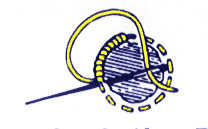
Draw circle on fabric. Work running stitches around it and cut out centre. Then overcast all around circle over running stitches.

This forms a square shape with all the stitches going through the central hole. By working the stitches in the order numbered in the diagram, (the even numbers are where the thread is stitched through the centre), thus making two trips round the centre, the final appearance is much neater than if every stitch is worked as you go round.
The stitch can easily be made larger or smaller over almost any even number of thread. See algerian eye or star eyelet stitch.
The pulled thread version of the eyelet stitch is worked in the same way but the thread is given a tug after working each stitch and when the two circuits have been completed, the central hole is enlarged. Also known as eye stitch. See also half eye stitch and diamond eyelet stitch.






